| Compact SUV; Built in Japan |
|
|
| Good condition price range: $5,500 – $12,500* |
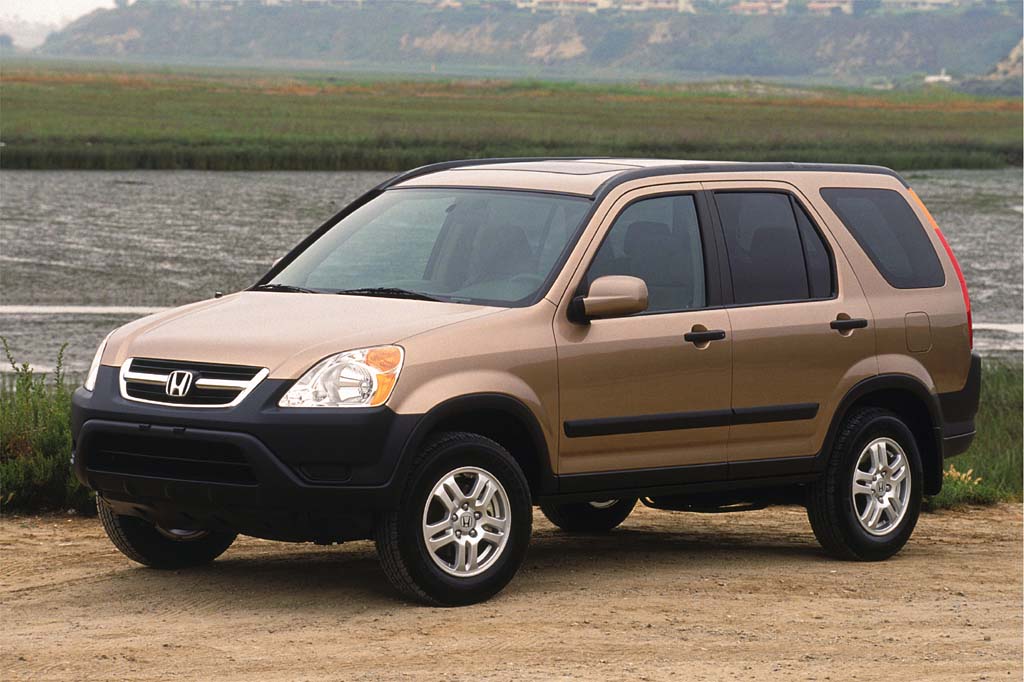
2002 Honda CR-V
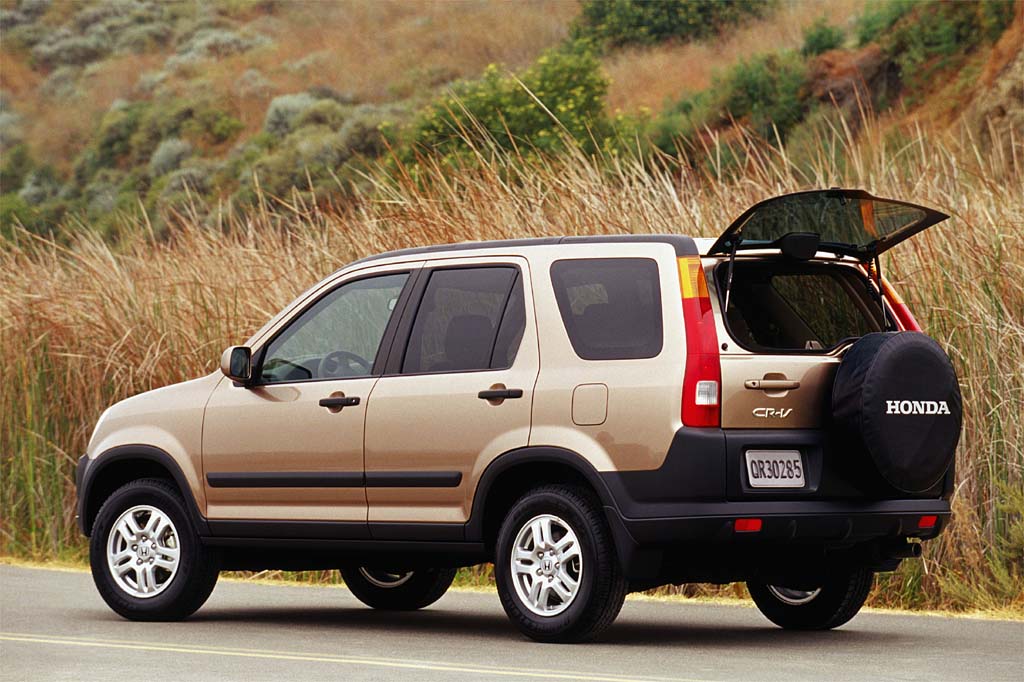
2002 Honda CR-V
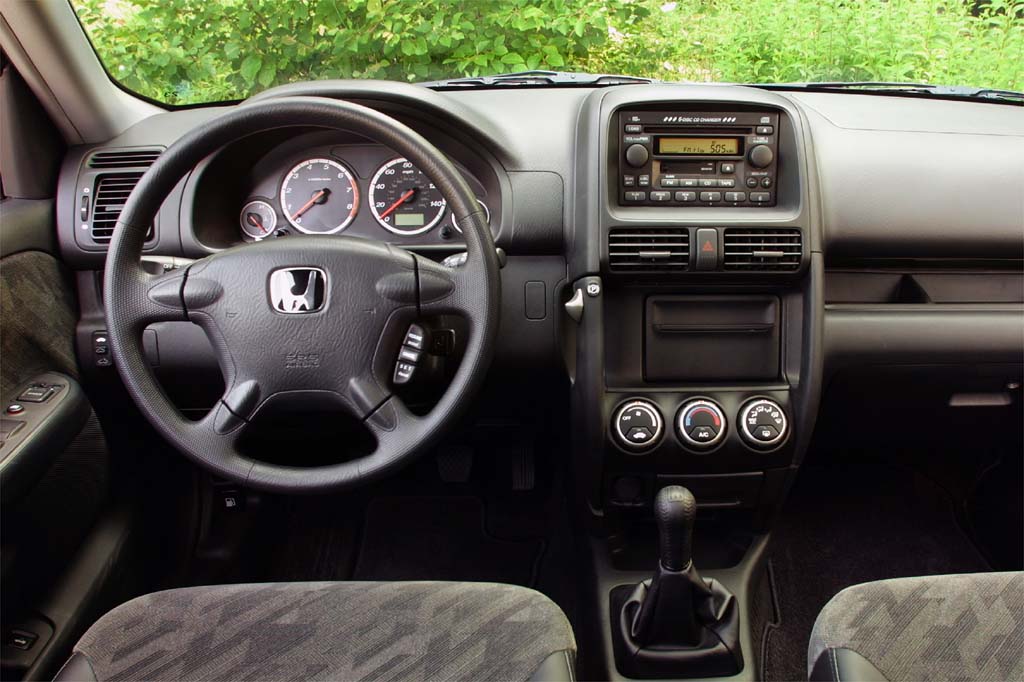
2002 Honda CR-V interior
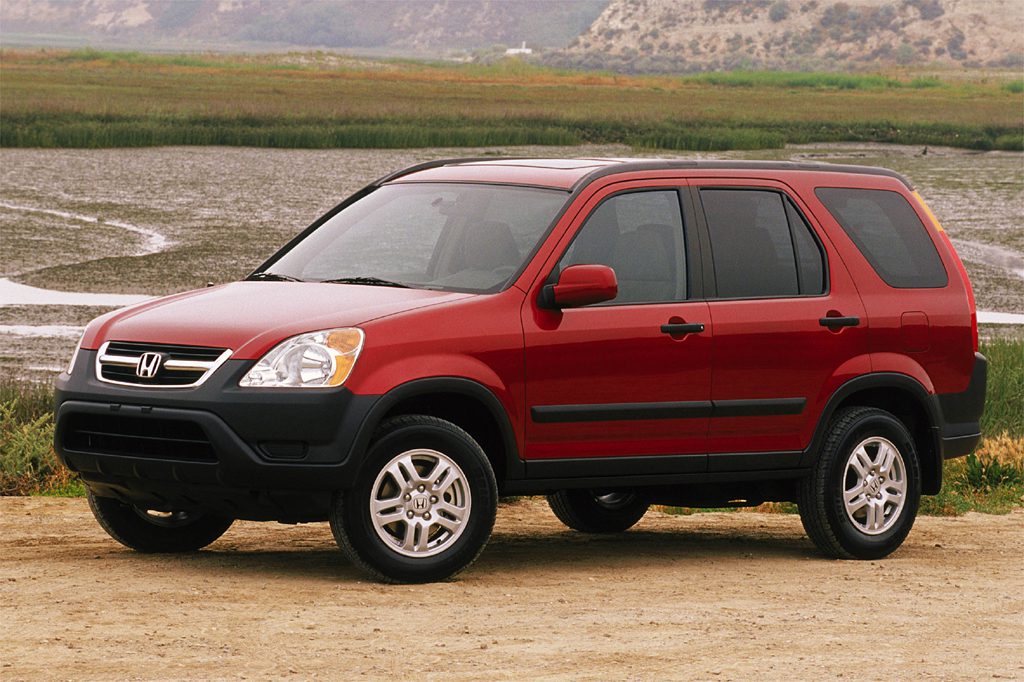
2004 Honda CR-V
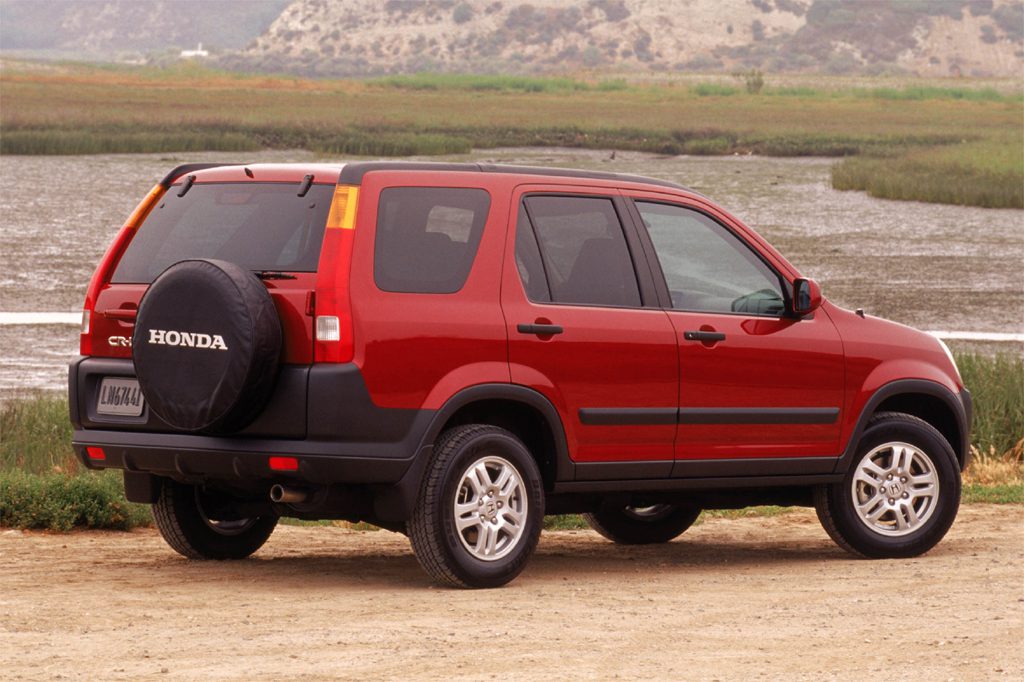
2004 Honda CR-V
| Pros: |
|
| Cons: |
|
Efficient and well-built, the CR-V also appeals for relative comfort, refinement, and spaciousness. Sure, V6 rivals have more brute power; but no small SUV beats this Honda for design intelligence and proven reliability. Strong demand has meant scarce discounting of new models, and high resale value keeps secondhand prices hefty.
Overview
More interior room, greater power, new styling, and fresh features highlighted the redesigned CR-V, which arrived for 2002.
Like the 1997-2001 original, Honda’s CR-V was a four-door, five-passenger compact sport-utility vehicle with a side-hinged tailgate and four-cylinder engine.
Wheelbase was unchanged and no exterior dimension grew more than 1.3 inches. Even so, new interior panels expanded cabin width by 3.6 inches, rear leg room increased 2.7 inches, and cargo volume gained 5 cubic feet.
A new 160-horsepower, 2.4-liter engine replaced the previous 146-hp 2.0-liter. Manual and optional automatic transmissions were available.
The LX model came with front-wheel drive or all-wheel drive. The EX was all-wheel-drive only. Honda’s AWD system did not have low-range gearing.
Power windows and locks, cruise control, cassette/CD audio, tilt steering column, and height-adjustable driver’s seat were standard. Antilock braking was limited to the EX, where it was standard. Front side airbags–new to CR-V–were standard on the EX and optional for the LX, as were alloy wheels.
A sunroof was new this year, exclusive to the EX as standard equipment. Leather upholstery was not offered on any model. All models had a 60/40 split folding rear seat. The innovative lift-out rear cargo floor could double as a folding picnic table.
Honda’s CR-V competed against the Ford Escape, Mazda Tribute, and Subaru Forester.
Yearly Updates
| 2003 CR-V Again a strong seller after its 2002 redesign, the CR-V got only two detail changes for 2003. Updates were confined to a center console bin enlarged to hold standard CD boxes, and coat hooks added to the rear roof-mounted assist handles. LX models returned with front-wheel drive or all-wheel drive, as did the uplevel AWD EX. ABS and a sunroof were standard on the EX, but unavailable for LXs. |
| 2004 CR-V Except for a new front-passenger power door-lock switch, little changed on the 2004 CR-V. |
| 2005 CR-V CR-V gains more standard safety features for 2005, including curtain side airbags. Other additions include a leather-upholstered model and a new automatic transmission. Detail styling changes round out the revisions. The automatic for ’05 is a 5-speed unit vs. a 4-speed. Four-wheel disc brakes continue as standard and are joined for ’05 by ABS, which had been standard only on the LX. All models also gain an antiskid system, which was previously unavailable. Front side airbags were an extra-cost feature but are standard for ’05 and joined by head-protecting curtain side airbags for both seating rows. Sixteen-inch wheels replace 15s for ’05. The SE has standard leather upholstery and heated front seats. Both are new CR-V features, as are steering-wheel radio controls and an outside-temperature indicator for EX and SE models. |
| 2006 CR-V There is no significant change for the CR-V in 2006. |
